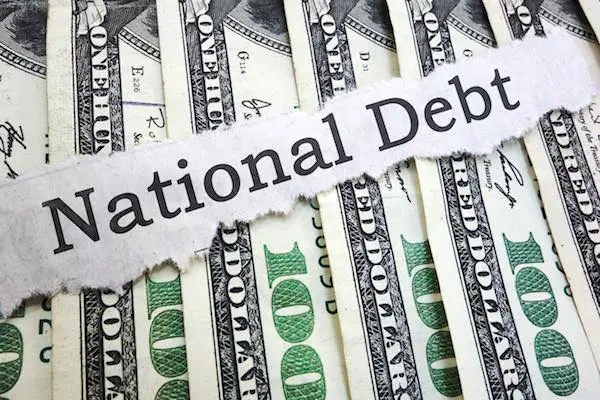The Congressional Budget Office has released a new report in which it says the federal government is likely to run out of money earlier than expected.
The CBO previously said last December that it expected the government would run out of money in the spring, possibly in April. In its new report, it says that this is more likely to be in March:
The Congressional Budget Office projects that if the debt limit remains unchanged, the ability to borrow using extraordinary measures will be exhausted and the Treasury will most likely run out of cash in the first half of March 2018. If that occurred, the government would be unable to pay its obligations fully, and it would delay making payments for its activities, default on its debt obligations, or both.
The revised calculation is based on anticipated effects of recent tax legislation and the actual spending and revenue amounts in December.
Warning from Treasury Department
Treasury Secretary Steven Mnuchin also asked Congress to raise the debt ceiling as soon as possible. In a statement he made before the Senate Committee on Banking, Housing and Urban Affairs, Mnuchin said:
In December I wrote to Congress providing notification of my determination that a “debt issuance suspension period” (DISP) would last until January 31st. As Congress has not acted to suspend or increase the debt ceiling, I have determined that the DISP will be extended into February and will be notifying Congress as such. I respectfully urge Congress to act as soon as possible to protect the full faith and credit of the United States by increasing the statutory debt limit.
Treasury’s Use of Extraordinary Measures
The CBO report references the government’s use of “extraordinary measures” to offset the debt ceiling. It notes that “the ability to borrow using extraordinary measures will be exhausted and the Treasury will most likely run out of cash in the first half of March 2018.”
Some of these measures have a direct impact on federal employees.
G Fund
One of these measures involves borrowing money from the G Fund inside of the Thrift Savings Plan.
The CBO report notes that this is one measure still available to the Treasury Department:
Continue to suspend the investments of the Thrift Savings Plan’s G Fund. Otherwise rolled over or reinvested daily, those investments totaled $69 billion in Treasury securities as of December 31, 2017.
This is effectively an accounting gimmick used to buy more time until the debt ceiling is raised by Congress and has been done numerous times in the past. After the debt ceiling is raised, money is put back into the G Fund with interest so that is is “made whole” again, a provision which the TSP notes ultimately does not negatively impact federal employees who are invested in the G Fund:
The make-whole provision means that TSP participants who have invested in the G Fund will not lose anything. The G Fund account balances would be exactly the same from day to day as if they were invested in Treasury securities. Furthermore, disbursements of TSP loans and withdrawals would not be delayed, nor would the amounts of those payments be reduced.
Retirement Annuity Funds
Another measure involves the Civil Service Retirement and Disability Fund (CSRDF) and the Postal Service Retiree Health Benefts Fund (PSRHBF).
The CBO report says that this is a second “extraordinary measure” still available to the Treasury Department:
Continue to suspend the issuance of new securities for the CSRDF and the PSRHBF, which total about $3 billion each month.
The CSRDF provides defined benefits to retired and disabled Federal employees covered by the Civil Service Retirement System (CSRS).
This fund invests in special-issue Treasury securities, and these securities count against the debt limit.
The Treasury Department is authorized to suspend investing money received by the CSRDF. This authority can be used when the Secretary of the Treasury determines that additional investments cannot be made without exceeding the debt limit. Also, the Treasury can redeem existing investments held by the CSRDF when the Secretary of the Treasury determines a “debt issuance suspension period.”



